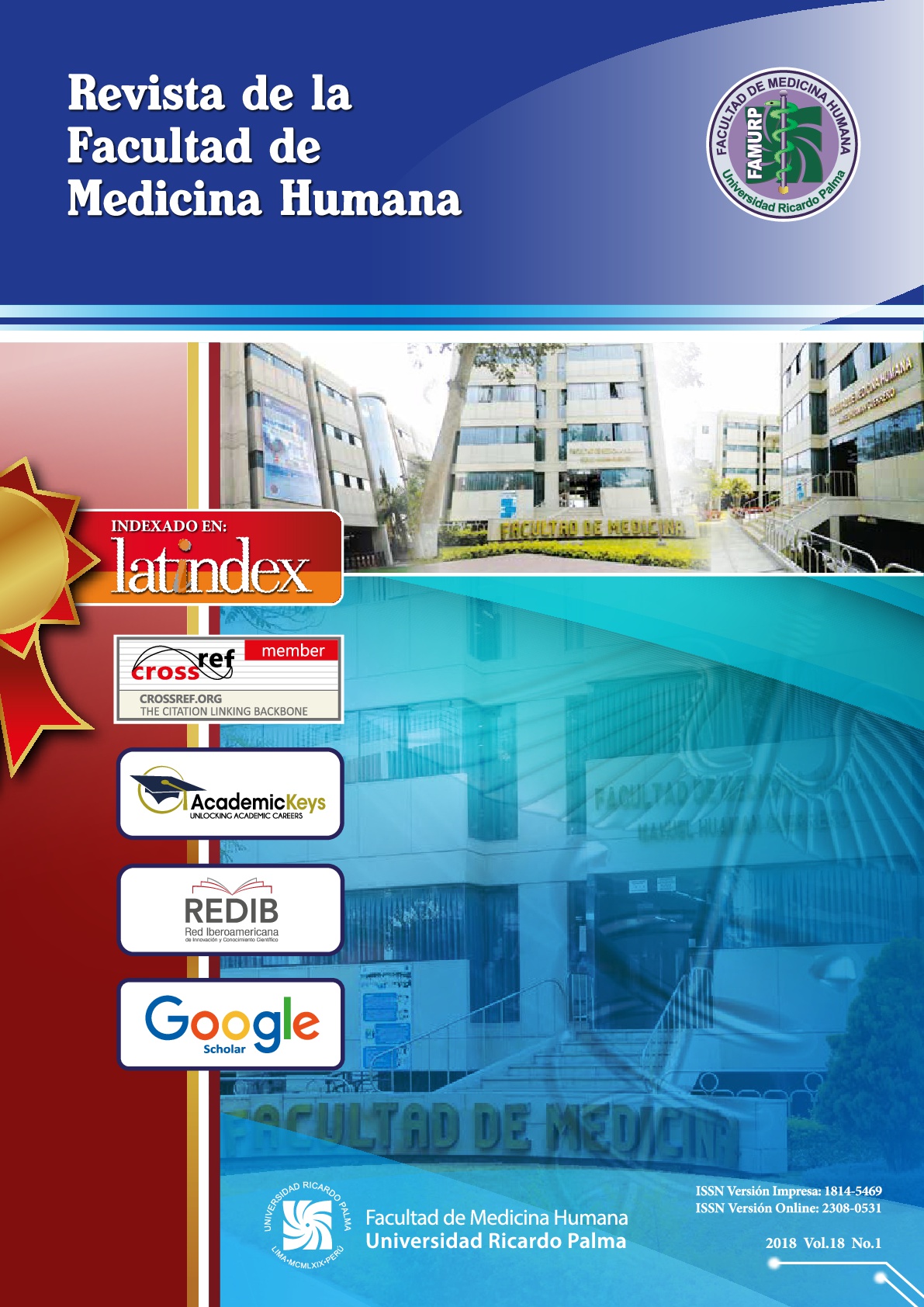Complicaciones por rotura de aneurismas cerebrales en pacientes operados en un hospital de Lima- Perú. 2006 - 2014
Complications for breathing cerebral aneurysms in patients operated in a hospital of Lima- Peru. 2006 - 2014
Keywords:
Broken aneurysms, Complications, Operative periodAbstract
Abstract Objective: To determinate the complications that was occured to the patients with brain aneurysm rupture, at the Hospital Nacional Alberto Sabogal Sologuren from 2006 – 2014, during the pre-operative, intraoperative and postoperative period, we used a quantitative, observational, descriptive transversal and retrospective, study.Methods: We reviewed Clinical History who were operated of brain rupture aneurysm and who qualified of patients to be included. The data obtained was evaluated with complication graphics in three moments analized.
Results: From 109 operated patients, we evaluated 67 (61.46%) Clinical Histories. 47 women (70.14%), 20 men (29.85%). Ages varying between 22 and 82. With 35 cases between 45 and 65 years of age (52.23%). Posterior comunicant aneurysms 33 cases (49.25%). Global Vassospasm 49 cases (24.37%). Hydrocephalus 15 cases (7.46%). Intrahospital pneumonia 34 cases (50.74%). Speech problems 15 cases (22.38%).
Conclusion: We found that women are more likely to develop this disease than men, we also have that the complications during the pre-op period were haemorhage 9 cases (13.43%), vasospasm 15 cases (22.38%). And intrahospital pneumonia 7 cases (10.44%). During the surgery the complications found were rupture of the aneurismatic sac in 21 cases (31.34%). Complicated disection 36 cases (53.73%); after surgery the complications are Delayed Brain Ischemia in 18 cases (26.86%), unnoticed clipping of the pericallosa arthery or temporal branch or frontal branch of medial cerebral artery in 5 cases (7.46%), distal cerebral infarct 7 cases (10.44%), pneumonia intra-hospital 29 cases (43.38%), hemiparesis 17 cases (25.37%), hemiplegi 8 cases (11.94%), aphasy and disartria 15 cases (22.38%). Hydroelectrolitic disorder 57 cases (85.07%). 24 cases (35.82%) were operated withing 4th to 10th day after the ruptured aneurysm. Recommendation: Proceed to do surgery, on patients with ruptured intracranial aneurysm even if they are within the 4th to 10th day of the initial event, days that are considerated “prohibited”.
Key words: Ruptured Aneurysm; Complications; Before; Into and after surgery; Results. (source: MeSH NLM)
DOI: https://doi.org/10.25176/RFMH.v18.n1.1266


Downloads
Published
How to Cite
Issue
Section
License
Copyright (c) 2022 Revista de la Facultad de Medicina Humana

This work is licensed under a Creative Commons Attribution 4.0 International License.




































